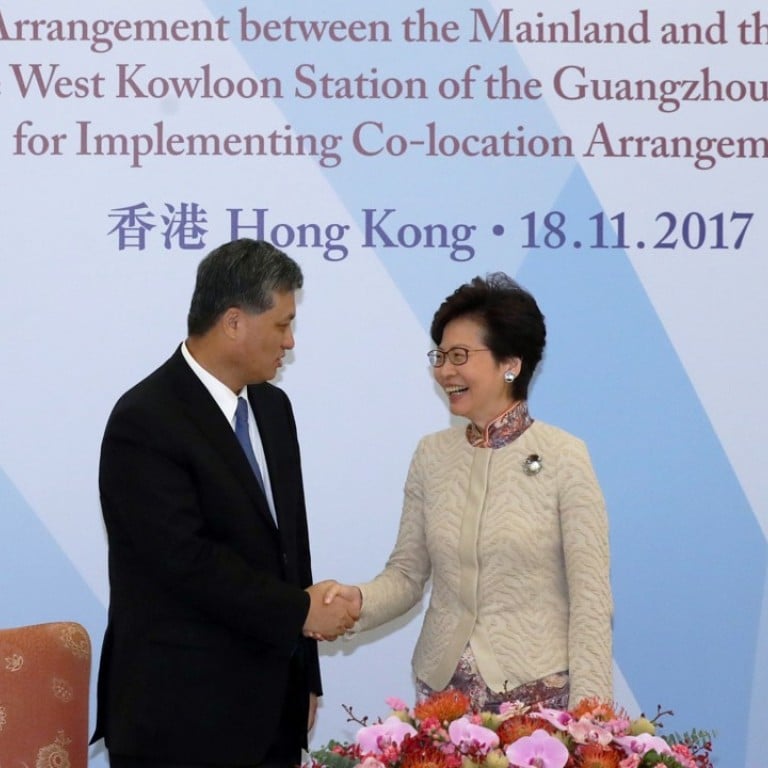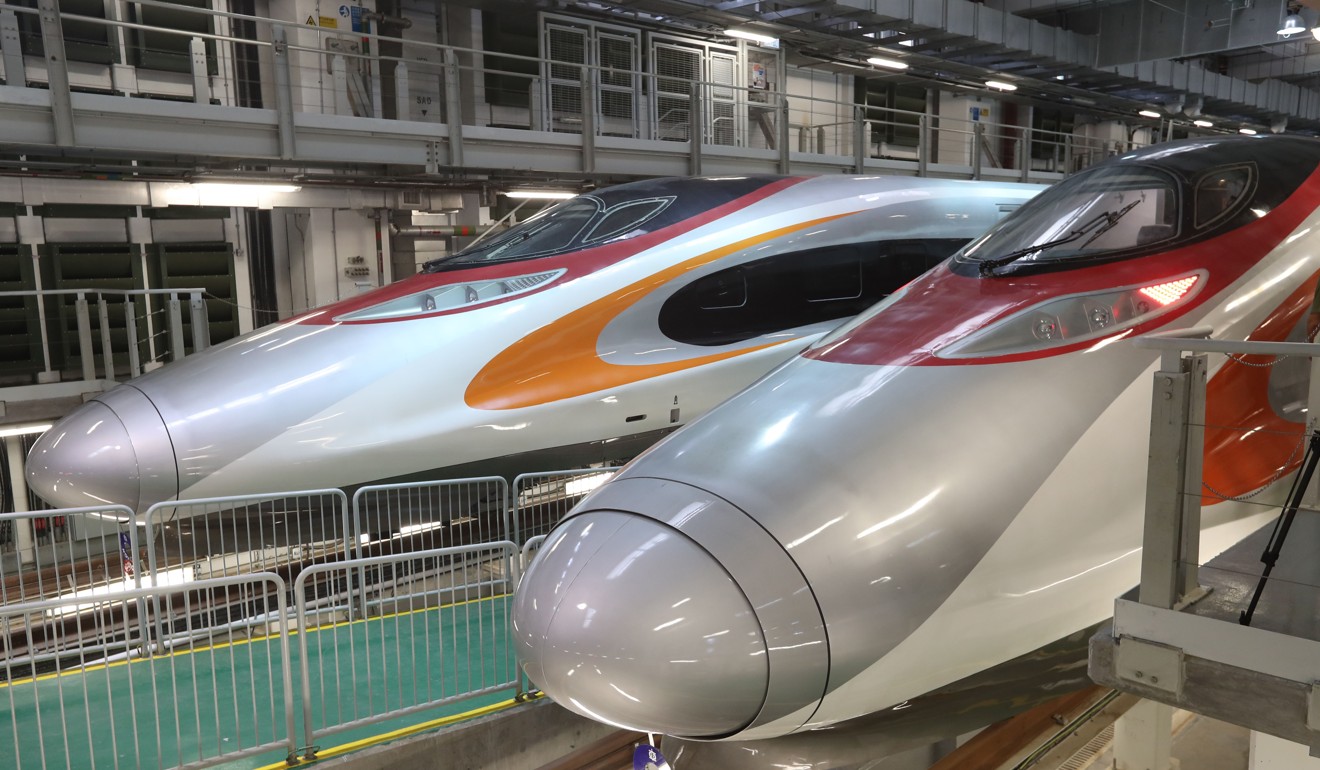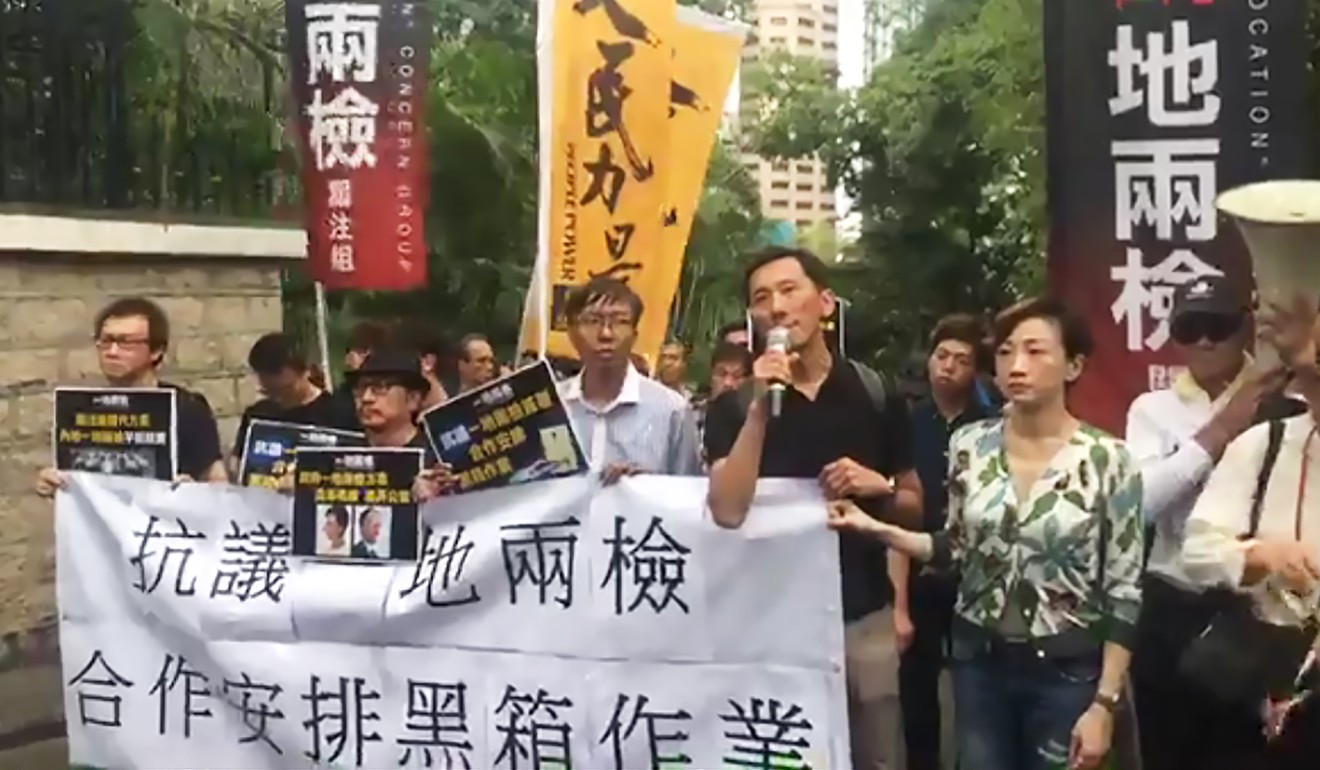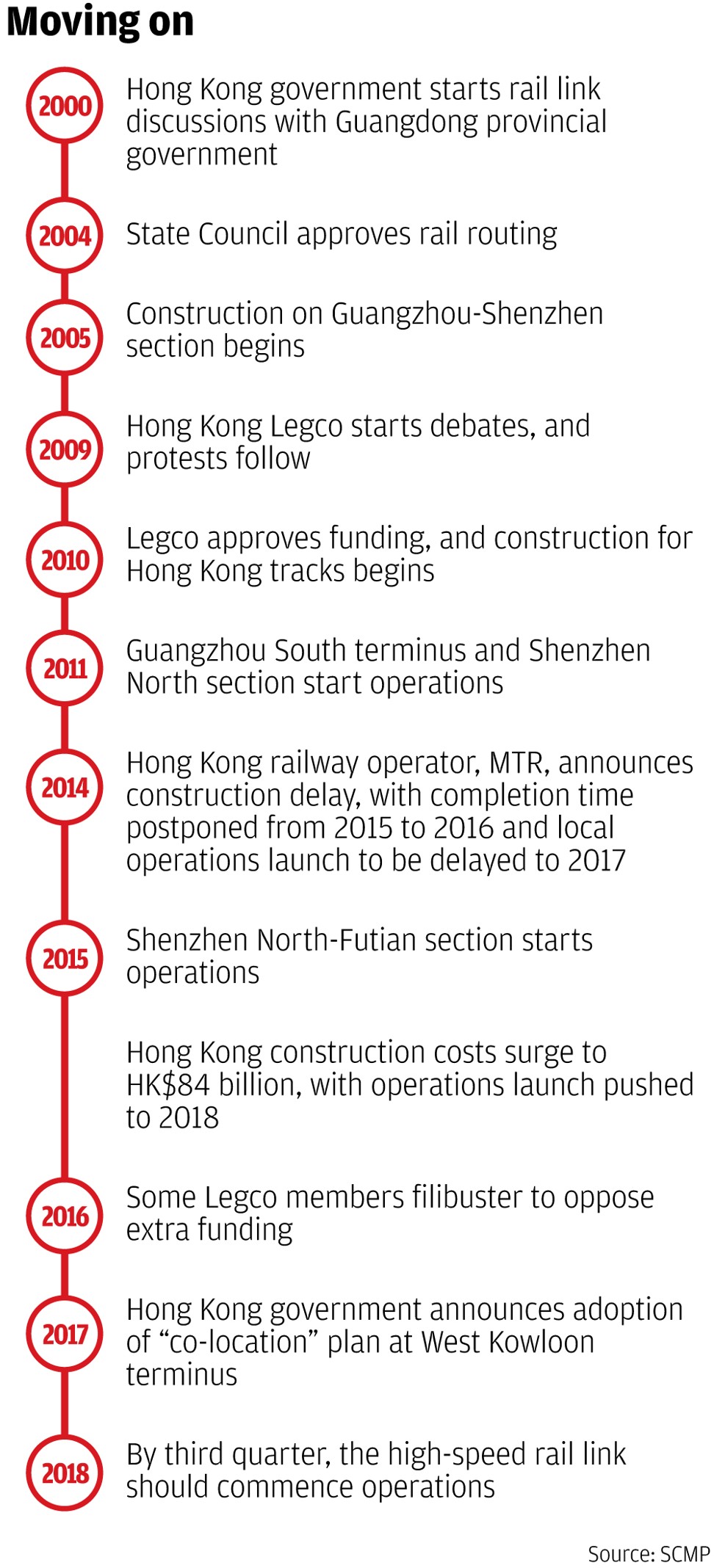
Hong Kong signs joint checkpoint deal for high-speed rail project, allowing mainland Chinese officials to work on city soil
Pan-democrats have questioned the legality of the arrangement, which cedes part of Hong Kong’s territory to mainland Chinese jurisdiction
Hong Kong Chief Executive Carrie Lam Cheng Yuet-ngor signed a controversial deal on Saturday that will allow mainland Chinese officials to enforce national laws in the heart of the city, but questions remained over the arrangement’s legality.
Under the agreement made between Lam and Guangdong provincial governor Ma Xingrui, the West Kowloon terminus of the HK$84.4 billion (US$10.8 billion) Guangzhou-Shenzhen-Hong Kong express rail link will house a facility for Hong Kong and mainland Chinese authorities to carry out immigration and customs procedures.
A designated area, which will include two office floors, the waiting hall for departing passengers, the station platforms and the connecting passageways and escalators, as well as the compartments of the train itself, will be subject to the jurisdiction and laws of mainland China.

Lam said Saturday’s agreement was the first in a three-step process, with endorsement from Beijing’s top legislative body, the National People’s Congress Standing Committee (NPCSC), being next.
She said she expected a decision next month and then the government would begin the third step – introducing local legislation in February next year.
“Local legislation [will be] the most difficult part,” Lam said. “I hope it will be plain sailing in the Legislative Council so we can finish this process in time to open the high-speed rail link in the third quarter of next year.”
Pan-democrats have expressed fears that the “one country, two systems” governing principle would be infringed.
Lam stopped short of providing a legal basis for the joint checkpoint arrangement, which cedes part of Hong Kong’s territory to mainland Chinese jurisdiction.
“There is a very solid legal basis for making the co-location arrangement as we have repeatedly discussed this matter with mainland Chinese authorities. This arrangement must comply with the Basic Law principles,” Lam said. “We will be able to explain clearly how Basic Law articles are applied at a later stage, when the NPCSC issues the decision.”
The full text of the agreement was withheld as the government only disclosed eight key points. Lam said they would publish the whole text after the NPCSC has endorsed it.
Under the deal, mechanisms will be put in place to ensure efficient operation of the mainland Chinese zone and help mainland China handle “sudden or emergency incidents” that may arise in the area.
It also stipulated that mainland Chinese officers will exercise exit and entry regulations such as immigration inspection, customs regulation, and inspection and quarantine measures. The train itself will be under mainland Chinese control even when it is travelling on rails in Hong Kong. Mainland Chinese officers can not enter any area outside their designated zone to enforce the law.
Lam said when mainland Chinese officers finished work, they would need to return to the mainland.
The chief executive also dismissed suggestions that the joint checkpoint arrangement was part of a Beijing plot.
“I’ve heard of views in society that co-location is an order the central government imposed on me, requiring me to be cooperative with mainland China’s agenda,” Lam said. “This is wrong. In contrast co-location is [an example of the] central authorities and relevant departments being cooperative with Hong Kong.”
Ronny Tong Ka-wah, an executive councillor and former Bar Association chairman, said it would be more “ideal and reasonable” if the NPCSC invoked Article 20, which would confer certain power upon the Hong Kong government to lease land to the mainland Chinese jurisdiction.

Tanya Chan, a Civic Party lawmaker, expressed outrage at the lack of a satisfactory legal basis from Lam. “Co-location has been a subject of intergovernmental discussion for more than a decade. Yet, there’s no constitutional justification today. It is ridiculous for Lam to say we cannot be shown the full text of the arrangement out of the need to respect NPCSC. She has not respected Hongkongers’ right to be informed.”
Secretary for Transport and Housing Frank Chan Fan said they needed to discuss many practical details with mainland Chinese rail authorities, such as the train schedule, mainland destinations, fares and the division of income.
After repeated wrangling, Legco on Wednesday finally gave a symbolic green light to the project as filibustering opposition members exhausted all their delaying tactics.



